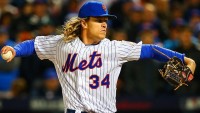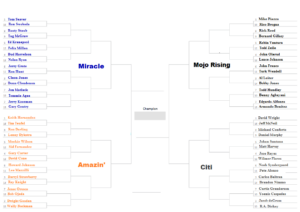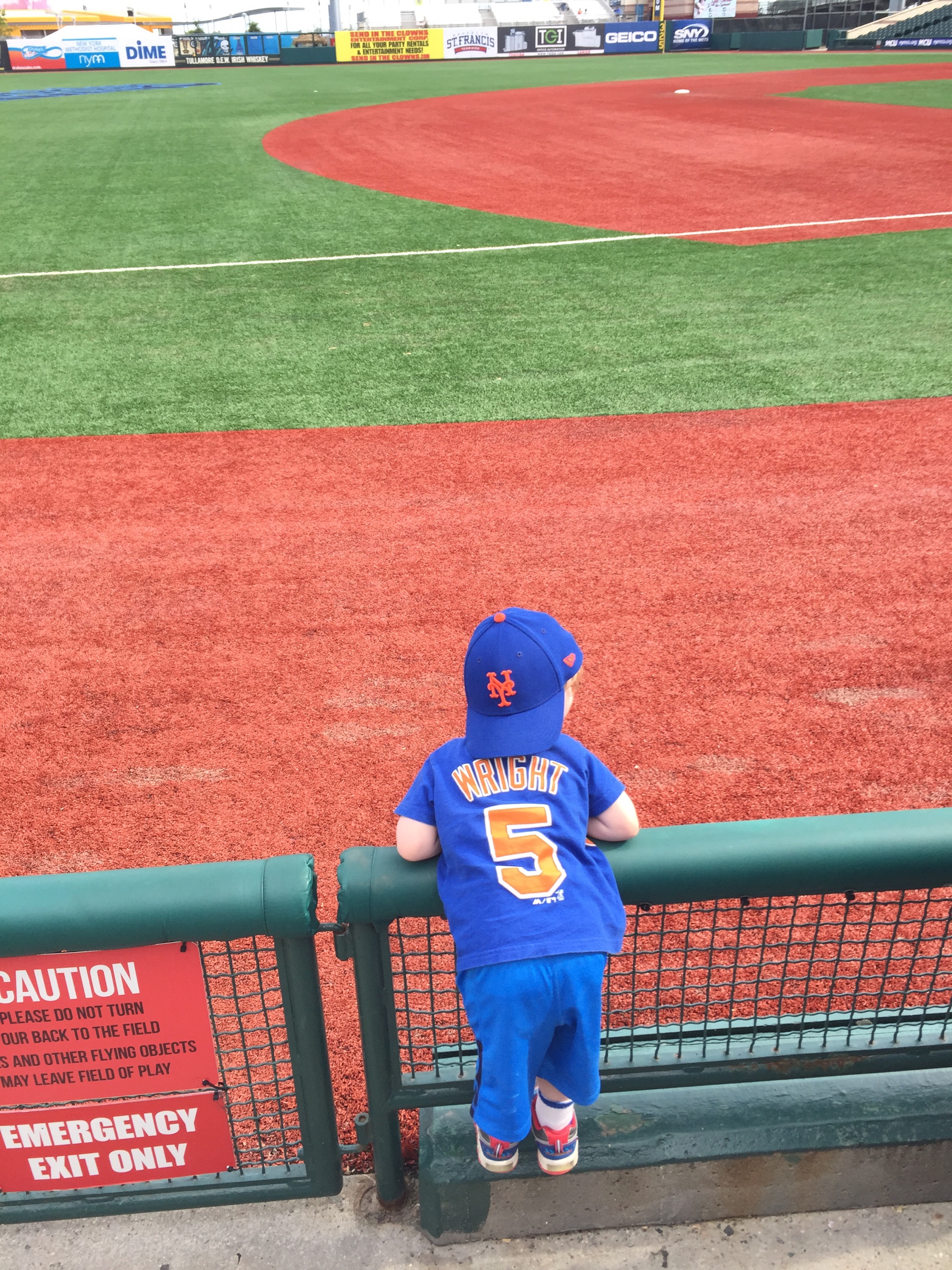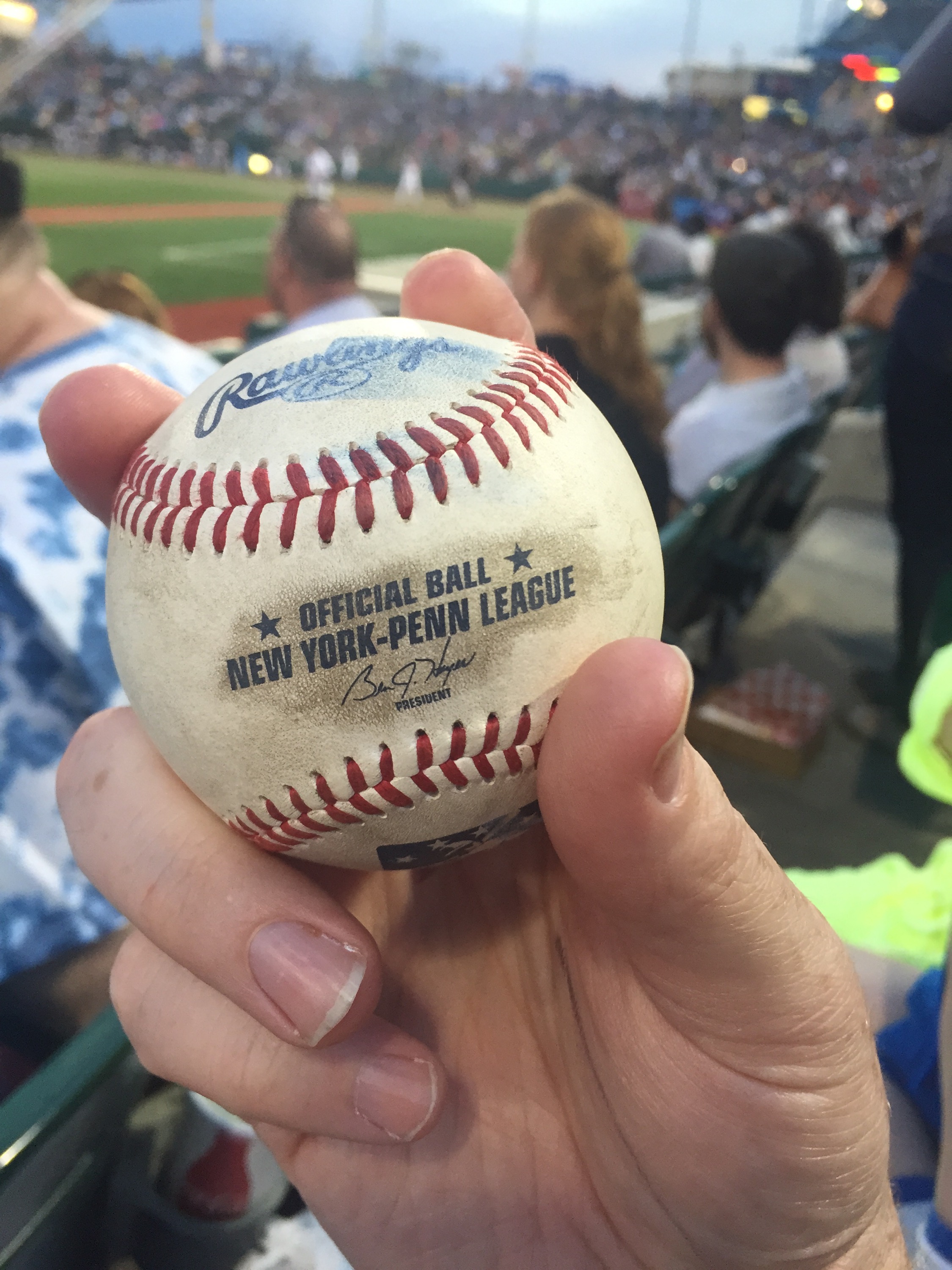Randy Myers
In 2011, John Franco had his first and only year on the Hall of Fame ballot. After garnering just 4.6% of the vote, he was five percented off of the Hall of Fame ballot. Had he received just three more votes, he could have stayed on the ballot one more year, and we could have seen what, if any, momentum could have been made towards getting him inducted into the Hall of Fame.
At the time, you could understand why Franco did not last long on the ballot. After all, Lee Smith, who retired as the all-time saves leader, had only received 45.3% of the vote in his ninth year on the ballot. At the same time, any and all things relievers had done over the 70s, 80s, and 90s were being completely dwarfed by Mariano Rivera. For an electorate still widely holding onto a feel approach, you could see why Franco didn’t feel like a Hall of Famer.
However, times change. Since Franco fell off of the ballot, we have begun to see a standard emerge for the induction of relievers into the Hall of Fame. When you start to break some of them down, you see Franco belongs in the Hall of Fame.
To start, we should denote the relievers who have been inducted into the Baseball Hall of Fame are Hoyt Wilhelm, Rollie Fingers, Dennis Eckersley, Bruce Sutter, Goose Gossage, Trevor Hoffman, Lee Smith, and Mariano Rivera. Looking at the group, Eckersley was the first pure one inning closer inducted, and we have to move forward to Hoffman’s induction for the one inning closer who did not have a stint as a starting pitcher.
To determine how Franco matches up with these relievers, we should first look to Franco’s career stats. In parenthesis is where Franco stacks up against the eight relievers already inducted into the Hall of Fame:
- Saves 424 (4)
- Games Finished (4)
- ERA 2.89 (6)
- ERA+ 138 (4)
- WAR 23.4 (9)
- WAR7 15.3 (9)
- JAWS 19.4 (9)
Starting with the clear negative, Franco does not have the advanced WAR stats to make a clear and distinct case why he should belong with the eight members already inducted. On that note, relievers as a group fall well short of the already established Hall of Fame WAR standards.
Looking at position players and starting pitchers, catchers have the lowest average WAR among Hall of Famers. That WAR is 53.6 which is significantly higher than the 39.1 WAR for the average Hall of Fame closer. If we were to hold tight and fast with the WAR standard, with the exception of Eckersley and Rivera, all closers would fall short. To a certain extent that makes a WAR predicated arguments on closers somewhat flawed.
Really, when you break it down, closers appear to be the ultimate in compilers getting inducted into the Hall of Fame. Hoffman was the classic example of that. Despite his not being as good as a closer as Smith in terms of ERA+, Hoffman was inducted by the writers, and Smith had to wait for the Veteran’s Committee.
One interesting thing about Hoffman was he only led the league in saves twice, and he never led the league in games finished. Notably, Franco led the league in saves three times, and he led the league in games finished twice. Like Smith, Franco falls short of Hoffman’s save totals. However, no left-handed reliever has accumulated more saves than Franco.
Since 1994, Franco has led all left-handed pitchers in saves. That’s two more saves than Billy Wagner, who is getting increasing support for the Hall of Fame. It is also 66 saves more than Randy Myers who has the third most saves among left-handed relievers.
Looking at the overall saves picture, Franco is fifth all-time in saves. Looking at the active closers, the soon to be 32 year old Craig Kimbrel has 346 saves putting him 78 saves behind Franco. At a minimum, that means Franco will remain in the top five for at least a few more years. If Kimbrel’s knee and elbow problems from the 2019 persist, he may never get there.
When we look across the history of baseball, putting aside the steroids caveat which impacts players like Barry Bonds and Roger Clemens, any player in the top five in a major statistical category is in the Hall of Fame. In fact, it goes much deeper than that. Taking out the steroid players and the ineligible ones like Pete Rose, it is really players in the top 10 to 20 in significant statistical categories are in the Hall of Fame.
Then, there is Franco. He has been in the top five all-time in saves for well over 30 years now. It appears he will remain there for another 10 years. He will likely remain there much longer than that, and he will likely be atop the left-handed reliever all-time saves list for nearly a century.
Like Harold Baines, who was inducted into the Hall of Fame by the Veteran’s Committee, Franco did not seem like a Hall of Famer in 2011. Nearly a decade later, he still may not feel like a Hall of Famer. However, with each passing year his left-handed saves record stands and each year he remains in the top five all-time in saves, we may soon feel like someone who has more saves than literally tens of thousands of relievers belongs in the Hall of Fame.
The New York Mets have been around since 1962, and in that time, they have two players in the Hall of Fame, three players with retired numbers, 31 people in the Mets Hall of Fame, and a whole host of other beloved players. The question is who exactly is the most beloved player?
Does Tom Seaver still have cache in 2020? Did Mike Piazza or David Wright surpass him? Does Keith Hernandez‘s work in the booth as well as his play on the field make him the one Mets player who has reached across all generations?
We really don’t know the answer to that and a whole host of other related questions. To that end, with there being no baseball, this site has set up a field of 64 akin to the NCAA Tournament. The field has been sectioned off in roughly 14 year increments to cover different eras of Mets baseball with each particular era having at least one Mets team who has won a pennant.
There were some tough choices to be made in selecting this field. The field was done using different offensive and pitching metrics, and it was done in consultation with Mets fans. On that note, special thanks are do to Joe D, Michael Mayer, Greg Prince, Tim Ryder, James Schapiro, and Bre S.
There were some tough decisions, and unfortunately, players like Ed Charles, Art Shamsky, Dave Kingman, John Stearns, Randy Myers, Pedro Martinez, Carlos Delgado, and Zack Wheeler did not make the list. It is regrettable, but the cuts had to be made somewhere to make this a more manageable field of 64.
The plan is to have polls open each day with a blurb on the match-up on this site with the ability to vote both on this site and on Twitter. The results of both will be combined, so if you are truly interested, you will be able to vote in both places. While not perfect, this is somewhat akin to the All-Star Game which to some degree is voting for fan favorites.
May your favorite player win, and Let’s Go Mets!
Ron Swoboda Rusty Staub Tug McGraw Ed Kranepool Felix Millan Bud Harrelson Nolan Ryan Jerry Grote Ron Hunt Cleon Jones Donn Clendenon Jon Matlack Tommie Agee Jerry Koosman Gary Gentry Tim Teufel Ron Darling Lenny Dykstra Mookie Wilson Sid Fernandez Gary Carter David Cone Howard Johnson Lee Mazzilli Darryl Strawberry Ray Knight Jesse Orosco Bob Ojeda Dwight Gooden Wally Backman Rico Brogna Rick Reed Bernard Gilkey Robin Ventura Todd Zeile John Olerud Lance Johnson John Franco Turk Wendell Al Leiter Bobby Jones Todd Hundley Benny Agbayani Edgardo Alfonzo Armando Benitez Jeff McNeil Michael Conforto Daniel Murphy Johan Santana Matt Harvey Jose Reyes Wilmer Flores Noah Syndergaard Brandon Nimmo Carlos Beltran Pete Alonso Curtis Granderson Yoenis Cespedes Jacob deGrom R.A. Dickey
If we’re being honest, this isn’t the greatest Mets lineup even when the team is healthy. It’s full of guys who certainly can all hit the ball out of the ballpark, but it’s also full of players with poor on base percentages. When you lose Lucas Duda and Yoenis Cespedes to injury the problems become even more exacerbated.
Now, the Mets have the pitching to win games no matter who is in the lineup. We saw that in 2015 as the pitching and Curtis Granderson kept the team afloat playing near .500 ball until reinforcements arrived.
In those games the Mets did win, they needed their pitcher’s to be great. At the state the Mets offense is now, the 2017 Mets are back to that point. Yesterday, Jacob deGrom was good.
He was mowing the Nationals down for the first three innings until his wildness caught up to him in the fourth. A Daniel Murphy single was bracketed by walks to Bryce Harper and Anthony Rendon loading the bases.
The Mets got a bit lucky as the Nationals third base coach sent Murphy on the ensuing RBI single by Matt Wieters.
In the fifth, the Nationals got to deGrom again. Adam Eaton and Trea Turner hit back-to-back one out doubles to make it 2-0. After Harper was just told to go to first base (essentially what the new intentional walk rule is), Ryan Zimmerman hit an RBI single to make it 3-0.
The Nationals wouldn’t score again in the sixth thanks in large part to Granderson:
Great grab by @cgrand3. #Mets pic.twitter.com/lwstvIwSKe
— New York Mets (@Mets) April 22, 2017
After getting the first two out, deGrom got in trouble again issuing yet another walk, this time to Eaton, and then allowing a single to Turner. At this point, Terry Collins turned to Josh Edgin to get the Mets out of the jam. Somewhat surprisingly, he did by striking out Harper.
Overall, it was a tough day for deGrom who issued a career high six walks. He was obviously ramped up early getting it up to 98 MPH and recording a lot of strikeouts. The early adrenaline wore off, and deGrom was left throwing 94 MPH and missing his spots. This was an uncharacteristic start for deGrom. His final line was 5.2 innings, eight hits, three runs, three earned, six walks, and 10 strikeouts.
Given the current state of the Mets offense, 3-0 might as well have been 30-0. This game was no different.
For the second time this season, the Mets offense was no-hit through five innings. This time, it was done by Gio Gonzalez. Though the Mets offense looked overmatched and lifeless, they would break through in the sixth.
Jose Reyes pinch hit for Edgin and worked a one out walk. Then, Juan Lagares broke up the no-hitter with a single. More than that, the Mets had a rally going.
Michael Conforto didn’t help the narrative he can’t hit left-handed pitching by striking out and going hitless on the day. Where Conforto didn’t come through, a hobbled Asdrubal Cabrera did hitting an RBI single to make it 3-1. That was as close as the Mets would get.
Jay Bruce and Neil Walker had back-to-back strikeouts ending the Mets only rally of the game. The offense then made a struggling Nationals bullpen look like the 1990 Nasty Boys.
Blake Treinen, Enny Romero, and Koda Glover did their best Norm Charlton–Rob Dibble–Randy Myers impersonation to slam the door shut on the 3-1 victory.
With that, the Mets are 8-10 and are in fourth place 4.5 back. They’re having trouble beating the Phillies and can’t even hit a poor Nationals bullpen. It’s still April, so it’s still early, but things do not look good right now.
Game Notes: Cabrera tried to leg out an infield single in the fourth. He was noticeably hobbled, and he came out to take his position right before the first pitch of the fifth inning. For the second day in a row, an injured Yoenis Cespedes informed the team he was too injured to pinch hit. Once again, Travis d’Arnaud was limited to pinch hitting duty. T.J. Rivera got the start at third base over a healthy Reyes. He was 0-3.

Going into the 2016 season, there is one fear each and every Mets fan has. We dare not speak its name, but that doesn’t change the fact that it’s still present. That fear is that a pitcher will get seriously injured.
Looking at this year’s list of pitchers who could befall the dreaded “Verducci Effect,” Noah Syndergaard headlines that list. If Syndergaard was to suffer a season ending injury requiring Tommy John surgery? it would greatly hinder the Mets chances of winning not only the World Series, but also making it to the postseason. It’s something that not just Mets fans fear, but as Anthony DiComo of MLB.com reports, Syndergaard fears it also:
I’ve thought about it quite a bit. But I trust myself to put my body in the right situations to be able to perform at a healthy level.
The fear is justified. Syndergaard threw 65.2 innings more last year. He throws over 95 MPH more than anyone in the game. He’s working to add the fabled Warthen Slider to his already dominant repertoire. Name a risk factor for UCL years requiring Tommy John surgery. Syndergaard meets most if not all of them.
One risk factor not readily discussed is the team he plays for. Look at the projected Mets rotation when healthy: Matt Harvey, Jacob deGrom, Noah Syndergaard, Steven Matz, and Zack Wheeler. Put aside Syndergaard for a moment. What do the other four have in common? They are all hard throwing pitchers under the age of 30 who have already had Tommy John surgery.
Go outside this group. Since Warthen took over as the Mets pitching coach, the following homegrown Mets have sustained arm injuries: Jon Niese (shoulder), Dillon Gee (shoulder), Jeremy Hefner (two Tommy John surgeries), Rafael Montero (shoulder), Bobby Parnell (Tommy John), Josh Edgin (Tommy John), Jack Leathersich (Tommy John). There are more, but you get the point.
Now, is this an organizational problem since Warthen took over, or is it just bad luck? Could this all have been avoided? Back in the 60’s and 70’s the Mets developed pitchers like Tom Seaver, Jerry Koosman, Nolan Ryan, and Jon Matlack. These pitchers threw more innings than the pitchers today, and yet, Matlack was the only one of this group that suffered an arm injury.
In the 80’s, the Mets had Dwight Gooden, Ron Darling, Sid Fernandez, Rick Aguilera, Randy Myers and David Cone. Of this group, only Doc and Cone had arm issues. It should be noted that Doc had many other issues as well, and Cone’s problem was an aneurysm later in his career.
In the 90’s, Generation K was a bust, and the Mets haven’t developed the caliber of starting pitchers like they have in the past until now. However, this generation seems to befall injuries far more often than their predecessors. Is it organizational? Is it bad luck? Is it preparation? For his part, Harvey wonders what if:
I think now, there are things I could have done better in high school or in college to maybe prevent it. But I don’t know. I’m not saying [Syndergaard] works that much harder than everybody else, because we all work hard. I think as time progresses, guys pay more attention to stretching the shoulder, strengthening the shoulder. If I could go back — I don’t know if this would’ve prevented me from having [surgery], but if I could go back and really do 20 extra minutes of stretching and arm care, you never know what could happen.
That’s the thing. We really don’t know why one guy suffers elbow and shoulder injuries while others don’t. Is it preparation? Is it good genes? Is it just good luck? Much time, energy, and money has been spent on this issue, and yet pitchers still get injured. Pitchers get injured despite teams doing everything in their power to try to prevent it.
It will help Syndergaard being in a clubhouse with players who have had Tommy John surgery. They each will have advice for him on why they suffered the injury and what they could’ve done differently. More importantly, Syndergaard appears to be a hard worker who takes the health of his arm very seriously. There is no doubt he is doing everything he can do to avoid the dreaded Tommy John surgery.
Based on what we’ve seen, if anyone can avoid it, it’s him.
Editor’s Note: this article was first published on metsmerizedonline.com


